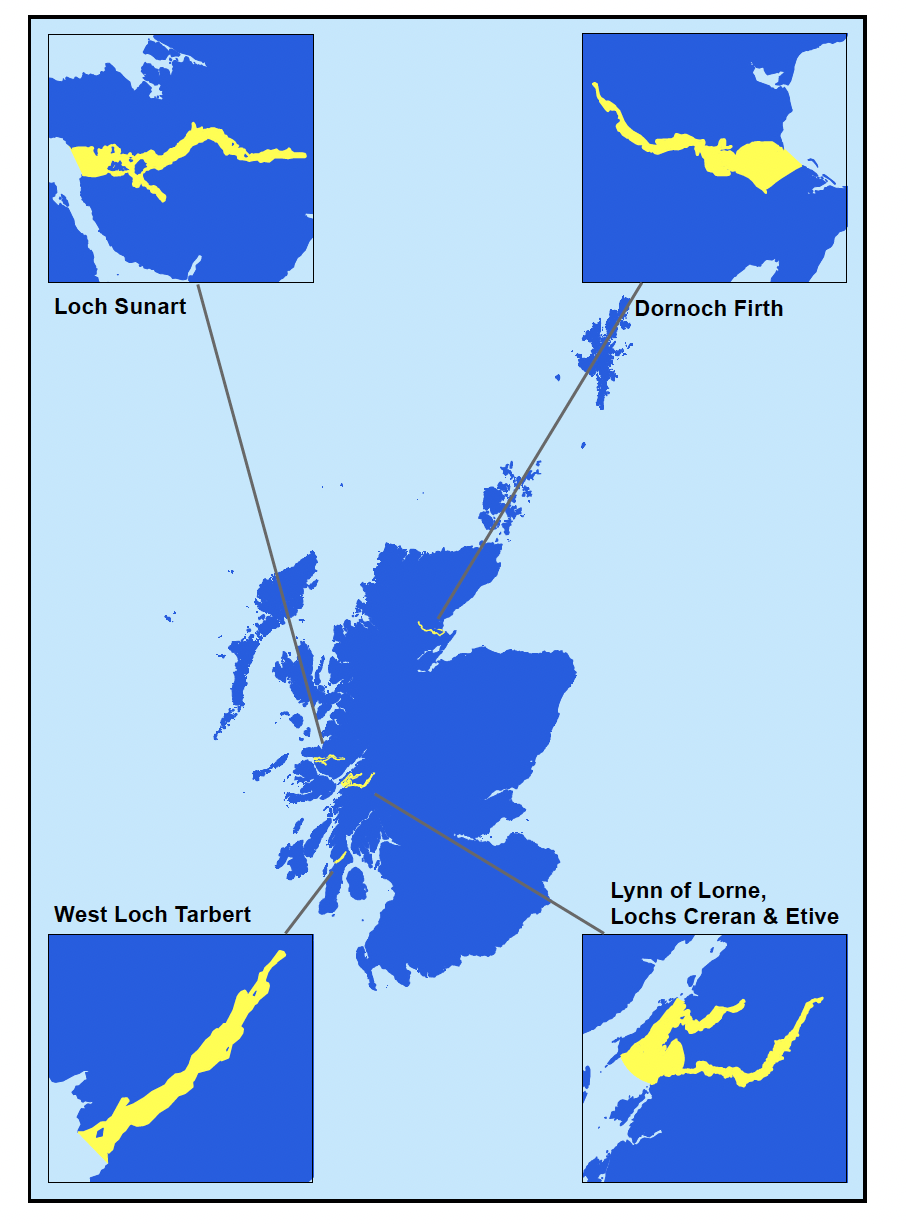Scottish Shellfish Farm Production Survey 2023
This report is based on the returns of an annual survey questionnaire sent to all active authorised shellfish farming businesses in Scotland. Statistics on employment, production and value of shellfish from Scottish shellfish farms are presented.
Health influences on the shellfish farming sector
A risk based surveillance programme targeting 133 shellfish site inspections was undertaken during 2023. On these visits, facilities, stock health, bio-security measures plans, movement records and details required for authorisation were checked. Records were checked remotely for a further 14 sites.
Most of the reported mortalities during 2023 were attributed to: predation from wild ducks, starfish, crabs, urchins and oystercatchers; fouling by sea squirts; adverse weather conditions including storms and temperature extremes; damage due to grading and handling and from natural causes. It is the responsibility of shellfish farmers to inform the Marine Directorate of any abnormal or unexplained shellfish mortality on their sites (see Supplementary Questionnaire Documentation, Survey Guidance Notes).
Approved zone status for bonamiasis, marteiliasis and ostreid herpesvirus-1 microvariant (OsHV-1 µvar) continued to protect the health of both wild and farmed susceptible shellfish stocks in Scotland’s waters (For further information see Marine Directorate, Fish Health Inspectorate, Movement Restrictions on Fish and Shellfish - gov.scot (www.gov.scot).
The whole coastline of Great Britain is recognised as free from infection with Marteilia refringens although there are movement restrictions in place on the River Tamar in Cornwall and Devon.
Also the whole coastline of Great Britain is recognised as being free from infection with Bonamia ostreae except the following areas which are covered by movement restrictions:
- Loch Sunart in Highland region;
- Dornoch Firth in Highland region;
- West Loch Tarbert in Strathclyde region;
- Lynn of Lorne, Loch Creran and Loch Etive in Strathclyde region;
- the south coast of Cornwall from Lizard to Start Point;
- the coast of Dorset, Hampshire and Sussex from Portland Bill to Selsey Bill;
- the area along the coast of North Kent and Essex from North Foreland to Felixstowe;
- the area along the coast in south-west Wales from St Ann’s Head to Linney Head, including Milford Haven and the tidal waters of the East and West Cleddau river;
- Menai Strait.
See figure 2 for maps of areas under movement restrictions for Bonamia ostreae in Scotland.
The whole coastline of Great Britain is recognised as free from OsHV-1 μvar except for the following areas:
- Essex, Kent and Suffolk (Felixstowe to Ramsgate including River Roach)
- Butley Creek, Suffolk;
- Poole Harbour in Dorset;
- the River Teign and River Exe in Devon.
Movements and imports of shellfish species susceptible to infection by Marteilia refringens, Bonamia ostreae and OsHV-1 μvar, into the Great Britain health zone, must originate from another zone or country recognised as free of that disease and are required to be accompanied by a health certificate. Movements are allowed from disease free areas to non-approved areas, as well as those for direct human consumption without re-immersion in any other sea water areas.
In 2023, there was a continued demand for Pacific oyster spat in Scotland. The shellfish farming sector should be aware of the increased disease risk with the introduction, movement and deposit of stock on site and the importance of ensuring good bio-security practices when sourcing shellfish from other areas.
Figure 2 Map of movement restrictions in place for the presence of Bonamia ostreae (designated areas in orange).
Note: Other confirmed designations are in place for the presence of Bonamia ostreae and other listed diseases in the Great Britain zone. Please contact the Marine Directorate Fish Health Inspectorate if you have any queries about shellfish consignments from England and Wales. For futher information see Controls of fish and shellfish diseases in England and Wales on GOV.UK

Contact
Email: MD.Productionsurvey@gov.scot
There is a problem
Thanks for your feedback